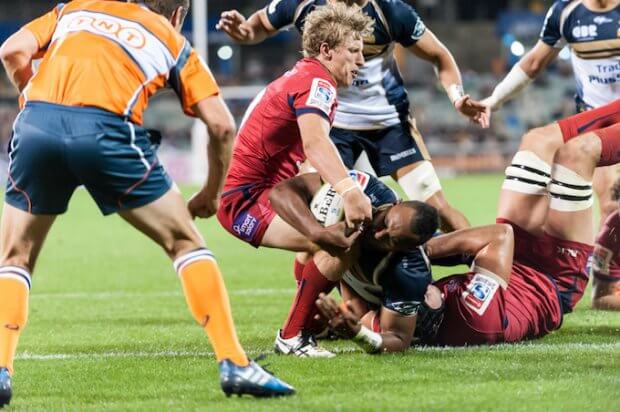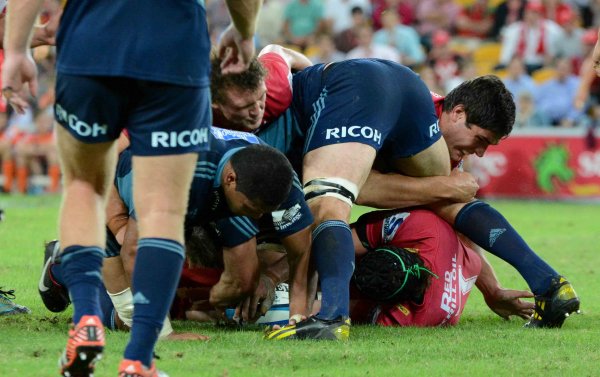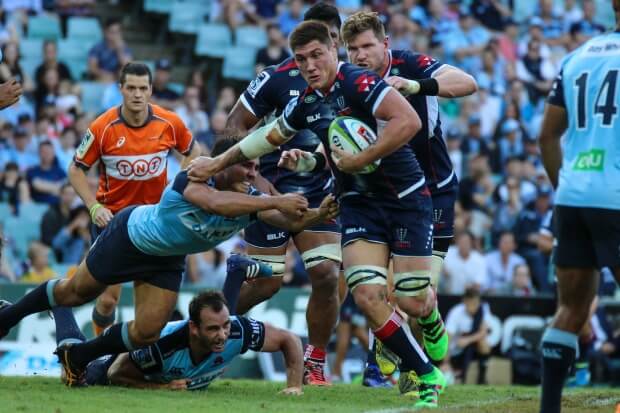The following article has been written by Eloise Pasteur. Eloise is a former, bad player of rugby while at school (a long time ago) who watches avidly and has a day job teaching science, maths and stats to people of all levels of ability. Occasionally she lets her love of rugby and her love of stats collide.
It’s been a long Super Rugby season, made even longer by the poor quality of the Australian Super sides and the saga that’s just seen the Western Force enter the courts with the ARU. But enough about all the drama – what about the rugby?
This article going to look in a bit more depth at the stats from the 2017 Super Rugby competition. Because it’s quite long this will be two articles, attack and defence, rather than one really long one, each with its own conclusion. First up will be the defence stats. There is a lot more detailed statistical analysis that I’m sure the ARU and the clubs are doing. But hopefully these 2 articles will give us fans some insight into some of the ways Australian clubs play differently to everyone else, as well some statistical food for thought – the stats don’t always show us all the information.
I’ve used simple correlations to try and analyse what stats tell us interesting thing about what is going on. Remember that correlation does NOT imply causation. For each statistic, the blue graph is the whole competition, the gold graph is just the Australian conference, the black is just the New Zealand conference and the green just the two South African conferences combined.
Because defence wins championship, lets start there.
Tackling Matters
Figure 1 shows Tackle Success vs Points Scored (against). On the top left we have the total from all 18 Super teams, before splitting the data into Australian, Kiwi and South African conferences:  Generally we see that if you tackle better and you concede fewer points (teams who does are closer to the top-left side of the graph), as you’d expect. That is particularly true for the Australian conference but also for the South African conferences.
Generally we see that if you tackle better and you concede fewer points (teams who does are closer to the top-left side of the graph), as you’d expect. That is particularly true for the Australian conference but also for the South African conferences.
The New Zealand conference, however, bucks this trend. First of all, three NZ teams ended up on 300 points scored against them, despite have very different tackle success rates. Secondly, the second best tackling side gave up nearly 33% more points that most of the other Kiwi sides.
The statistician in me tells me to be wary of this blip in the NZ conference. But the fact that second best tackling team – the third best overall – gave up about 100 more points than other Kiwi sides suggests that something else is going on. Perhaps the actual count of tackles missed and/or the position of the missed tackles is worth considering alongside this though? Or just where they miss most of their tackles?
Despite that, you could still stay that tackling success more or less means less points scored against your team.
Turnovers Work Against You
Figure 2 shows Turnovers vs Points Scored (against):

Surprisingly to me, and I suspect everyone else, overall, turnovers have virtually no correlation to points against. I would expect making turnovers to be a good thing overall, make more turnovers and you concede fewer points, which is the shape of the graph we see for the NZ conference but again all these graphs have no meaningful correlations.
However much we like turnovers, they aren’t dramatically important defensively – but they’re more apparently important and WORSE for the Australian teams than for the others. Not only is the size of the slope for the Australian conference exaggerated (because turnovers only range between 230-270), it is in the wrong direction!
This means that side that gets the most turnovers gives up the most points. I can’t say why – correlation doesn’t show causation – but it’s not a great statistic to have. It could be that this is a bad statistic. It’s not entirely clear what’s being collected here and it’s clear that some turnovers do have a dramatic defensive effect while others don’t (which is true for all sides). But what is the difference between the conferences?
Penalties Shmenalties
Figure 3 shows Points against vs Penalties conceded:
There’s not really a good correlation between penalties conceded and points against. This seems odd to me as some proportion of penalties get directly converted to points with goal kicks, another proportion get indirectly converted by territory into pressure and then tries. You would expect there to be some sort of correlation but there just isn’t.
In these graphs all the vertical axes are basically the same, so although it’s not quite significant that much steeper slope down for the NZ conference and the slight slope up for the Australian conference are comparable. Both the Kiwis and the South Africans have that negative slope, but there’a a positive slope for the Australians. Why?
What do the Australian teams do differently to everyone else? I don’t have a good answer here. I’m going to propose something that plays into fan (and commentator) bias, but for which there’s not much evidence from the stats. Penalties basically fall into four camps – stupidity, accident, smart play and cynical play:
- SBW’s shoulder charge in the second British & Irish Lions test was stupidity.
- I’m inclined to think the red card in the Super Rugby final was (while definitely a red card) an accident, although stupidity can’t be ruled out. Accidents can happen through fatigue as well.
- Smart play is when you keep a hand in the ruck for a bit too long or similar, or “accidentally” run offside and take out the player when your defensive line isn’t set but it’s not so blatant you get pinged with a card. Smart penalties can happen because your side is tired or for other reasons.
- Cynical play is that penalty to stop a certain try.
(There should probably be a fifth category for scrum penalties. “The ref made a decision when the scrum went down, and half the audience and the commentators all disagree and accused him of guessing” penalties.)

So, given those categories, I’m going to suggest that the slopes in the NZ and SA conference suggest they’re fitter and give up smarter and cynical penalties better – 3 points rather than 7 and don’t get punished on the score board for being yellow carded as hard. On the other hand, very tentatively, perhaps the Australian teams do a bit more or they give up more of different sorts of penalties.
The stats don’t break down the penalties like this, they don’t show what the outcome of the penalties were, so this IS speculation. But if you want to score your penalties this way and see what that means for the points, it might be interesting if you’re nerdy enough.
Closing thoughts
What could the Wallabies, and the Super Rugby teams, learn about their defence? Or what can we, the fans learn and try to look out for?
Making your tackles matters but, as the Kiwi teams show, it’s not everything.
I’m guessing that the scramble defence we see week after week makes a huge difference. Part of that comes down to fitness but more of it comes down to being willing to put it all on the line for the jersey and another chunk comes down to being able to read the game – that old Rugby IQ. If someone breaks a tackle, it’s no good running back and giving up a stupid penalty for offside, you need to run back on a smart line and get into your defensive line in a good position to make a tackle when needed.
I think the turnover data is flawed (so read it with caution), but from what we are give it seems that Australian sides suffer more than others from turnovers. The Kiwi conference seems to be the only conference where teams conceded less points the more turnovers they made.
It is worth considering why turnovers seem to have such an impact in the Australian game and not the others. I have no clear answers here, only questions. What do the other sides do after each type of turnover that makes their impact so much less worrying?

Again, in Australia there’s also a difference when it comes to penalties conceded compared to points conceded. Why is this? Why? I’m thinking Super Rugby teams in Australia take the points, in other countries they might risk it a bit more. This might not follow through to the test arena, where taking the points might be more important so it’s not clear there’s an important lesson here.
There is a difference in the slope of the penalties conceded to the points against. Why? I’m thinking Super Rugby teams in Australia take the points, in other countries they might risk it a bit more. This might not follow through to the test arena, where taking the points might be more important so it’s not clear there’s an important lesson here.
However, with more data available there might be other reasons that Cheika et al see and there can certainly be reasons like the Brumbies driving maul scoring a lot of points from lineouts after penalties (which might be scored as points from penalties) which are positives for the Australians. On the other hand, it might indicate that the New Zealand sides disrupt those lineouts really well, in general, giving that negative slope and the Australian sides give up points more easily. It is hard to say.
So after all this, what’s the one thing we can draw out from all this data? To make your defence better, make your tackles!
The next article will look at attack stats. See you soon.


